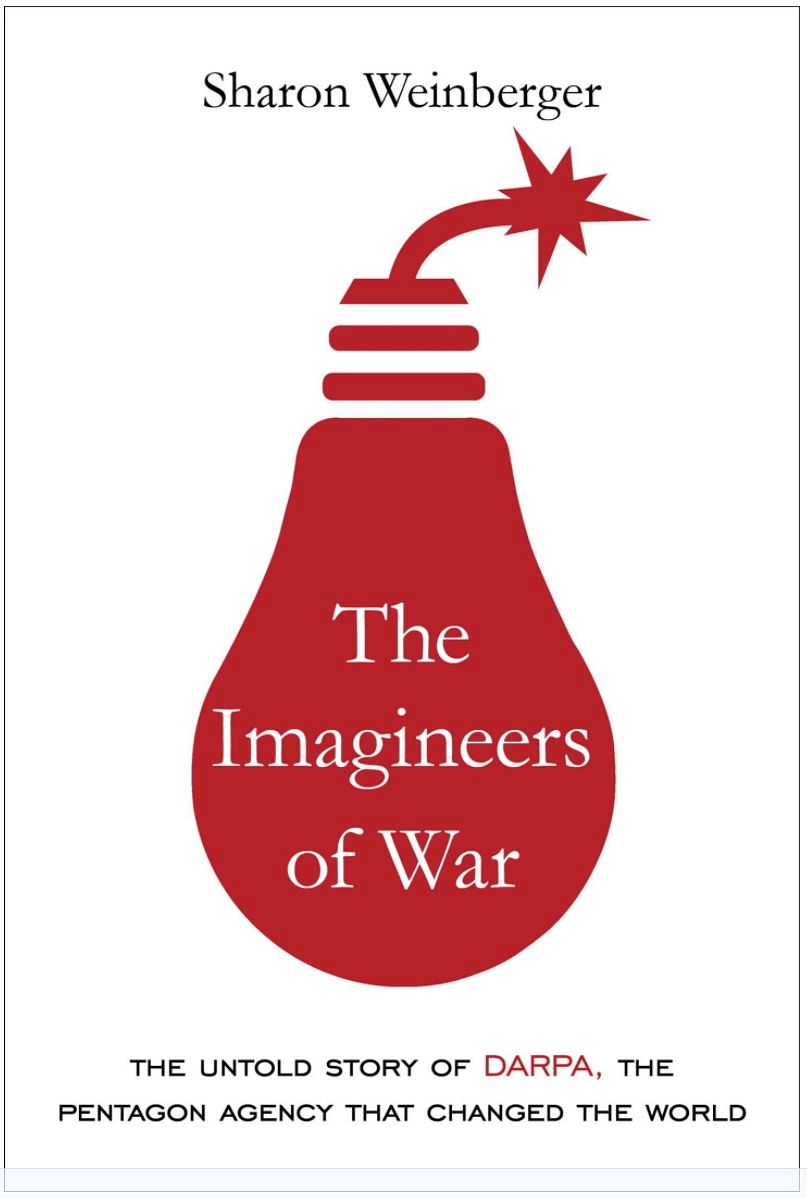Imagine a secret Pentagon agency that has been operating in the shadows for almost 60 years and whose products have shaped much of the world we live in today.
I started making a list: drones (the first one in 1968), robots, the internet (1969), computer mouse, autonomous vehicles, email, fake news (1960), weed killers, defoliation agents, stealth technology, liquid crystal displays, data mining etcetera. And then I stopped because the list became too long. It became hard to believe that one agency could have initiated all that, and many less successful projects besides.
If such an organisation existed, you’d expect to know about it, or at least that it would be mentioned in books. But then again, it was a secret agency.
National security reporter, Sharon Weinberger, dived into the National Archives when the ARPA files were declassified after 50 years. There she unearthed the ‘untold story of DARPA’, which she complemented with interviews of the people that she could trace. DARPA (‘sounds like dog food’) was the new name of ARPA after a reorganisation in 1972.
Developing unimagined weapons of the future
The Advanced Research Projects Agency was hastily set-up with a two-page mission statement in 1958. ARPA was to be an independent agency that reported directly to the US Secretary of Defence. No specific areas of interest were mentioned, which meant a blank cheque for anticipating and developing unimagined weapons of the future.
Remember, this was at the onset of the Cold War. Sputnik, the world’s first satellite, had scared the Americans witless. If Russia could launch a beeper into orbit, and a dog shortly afterward, an atomic bomb could not be far off. Weinberger writes: “The lunatics and the opportunists finally had a place to go with their ideas: ARPA.”
The crazy Greek
The weirdest idea ever has to be credited to Nicholas Christofilos, the ‘crazy Greek’, whose “imagination was not tethered by practicality”. He proposed to launch an atomic bomb high in the atmosphere. The charged particles would be captured in the magnetic field (Van Allen belt) and form a shield against incoming rockets. At the time, even these ideas were executed, just because it seemed worth trying. It didn’t work out, by the way.
The absolute freedom to pursue research that might only be tangentially connected to a Pentagon goal has produced many useful ideas (see list), but the sheer scientific arrogance has caused massive suffering and many casualties as well. Just think of cancer-causing Agent Orange (defoliation), massive bombings in Thailand and Vietnam, deportation of the population while sniffing out the Vietcong and drone wars in Afghanistan.
Transform war but not end it
The book may have been born in the archives; Weinberger takes the reader on a tour around the globe, visits the hotspots, and looks behind the scenes. She wrote an exciting story as well as a riveting read. She ends her tour in Afghanistan: “Outside this one-time oasis of DARPA-funded techno-optimism, Afghans lived and fought much as they had for more than a thousand years. Inside, the bar stood empty, an enduring testament to science’s ability to transform warfare but not to end it.”
Let me put it simply: every engineer should read this book.
• Sharon Weinberger, The Imagineers of War, The Untold Story of DARPA, the Pentagon Agency that changed the World, Alfred Knopf, New York, 2017, 496 pages, € 26,-



Comments are closed.